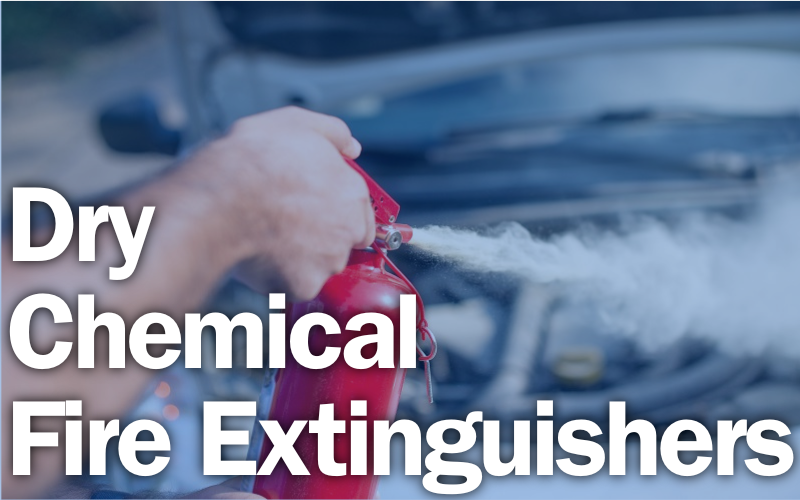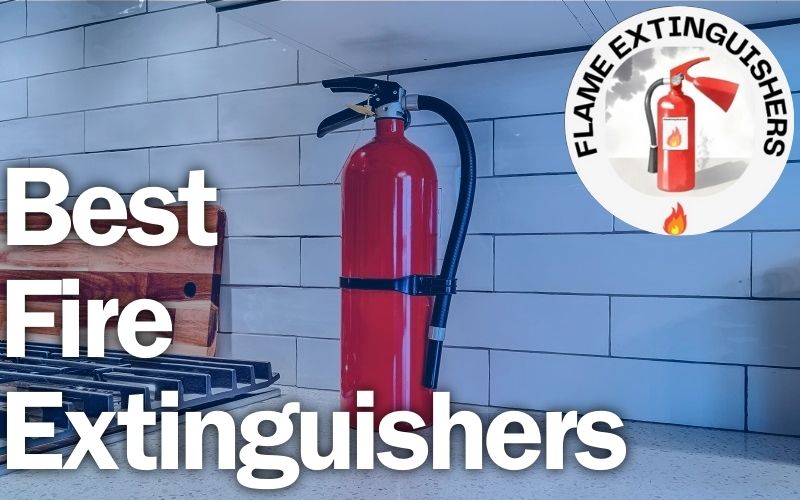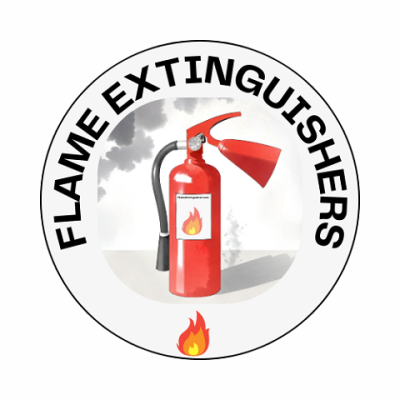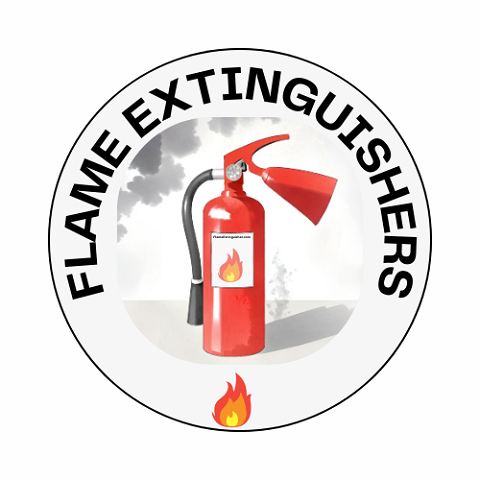Today, we’re diving deep into the realm of fire extinguishers, specifically focusing on the unsung hero – dry chemical fire extinguishers. Strap in, folks, because we’re about to explore what makes these devices the silent guardians of our safety.

Defining Dry Chemical Fire Extinguishers
Let’s start with the basics. A dry chemical fire extinguisher is a powerful firefighting tool designed to combat various types of fires. Unlike its counterparts, it employs a dry chemical substance as the extinguishing agent. This chemical is typically stored in powder form, ensuring rapid and effective deployment when the need arises.
The Class and Its All-Encompassing Nature
Dry chemical fire extinguishers come in multi purpose versions that a ABC rated and standard dry chemical fire extinguishers fall under the BC classification, covering a broad spectrum of fires.
Class A is for ordinary combustibles like wood and paper
Class B for flammable liquids. Whether it’s a gasoline spill in the garage or a kitchen grease fire, dry chemical extinguishers are equipped to handle flammable liquid fires by creating a barrier that suppresses the flames.
Class C for electrical fires. Given the non-conductive nature of the dry chemical powder, these extinguishers are safe and effective for electrical fires. They interrupt the electrical conductivity, cutting off the fire’s energy source.
This versatility makes dry chemical extinguishers an excellent all-in-one solution for residential, commercial, and industrial settings.
Class K Fires (Cooking Oils and Fats): Some dry chemical extinguishers are specially designed to combat Class K fires commonly found in commercial kitchens. These formulations work to saponify the cooking oils, creating a soapy foam that suppresses the fire.
Dry Powder vs. Dry Chemical Fire Extinguishers
Now, let’s address the elephant in the room – are dry powder and dry chemical fire extinguishers the same? Well, not exactly. Dry chemical extinguishers utilize a mixture of monoammonium phosphate and ammonium sulfate as their primary agents. On the other hand, dry powder extinguishers rely on substances like sodium bicarbonate or potassium bicarbonate.
The Best and Worst Fires for Dry Chemical Extinguishers
Transitioning into the battlefield, it’s crucial to understand when dry chemical extinguishers shine and when they might fall short.
Scenarios where it rules:
- Kitchen Infernos: Picture this – a grease fire threatening to turn your cozy kitchen into an inferno. This is where the dry chemical extinguisher steps in, swiftly neutralizing the flames without causing additional harm.
- Garage Adventures: In a garage filled with flammable liquids and potential electrical hazards, a dry chemical fire extinguisher is your go-to sentinel. Its ability to tackle Class B and C fires makes it the ultimate garage companion.
Scenarios when it drools:
- Sensitive Electronics: Dry chemical extinguishers, while effective, may not be the best choice for extinguishing fires involving sensitive electronic equipment. The residue left behind can cause damage to delicate components.
- Limited Visibility: In enclosed spaces, the discharge of dry chemical powder may create a thick cloud, hindering visibility. This can be a significant drawback in emergency situations.
What is in Dry Chemical Fire Extinguishers
What exactly goes into the mix of these chemical heroes? Here are some common chemicals found in dry chemical fire extinguishers:
- Monoammonium Phosphate: Effective against Class A, B, and C fires, this white powder interrupts the chemical reaction of a fire.
Caution: Corrosive to electronic circuitry; should not be mixed with bicarbonate dry chemicals to prevent a chemical reaction that could lead to pressure buildup and extinguisher rupture. - Sodium Bicarbonate: The initial dry chemical extinguishing agent. Modern sodium bicarbonate mixtures include additives, primarily a silicone polymer, to enhance flow and storage characteristics. Ideal for tackling Class B and C fires, this fine white powder smothers flames by releasing carbon dioxide.
Functionality: Sodium bicarbonate interrupts flame propagation and is effective against fires involving flammable liquids, gases, and electrical equipment. - Potassium Bicarbonate: Similar to sodium bicarbonate, potassium bicarbonate is suitable for Class B and C fires. It works by releasing carbon dioxide and is commonly found in kitchen fire extinguishers.
Limitations: Not suitable for deep-seated fires in ordinary combustibles.
One of the primary concerns when dealing with fire extinguishing agents is their impact on human and animal health. In the case of dry chemical fire extinguishers, the good news is that the chemicals used are generally considered non-toxic when used in the recommended amounts. However, prolonged exposure to the dust created during discharge may irritate the respiratory system. It’s advisable to seek medical attention if such exposure occurs.
Categories to Consider When Buying a Dry Chemical Fire Extinguisher
When purchasing a dry chemical fire extinguisher, several key considerations can make a significant impact. The five categories below are what we use when ranking the best fire extinguishers.
- Effectiveness/Type:
Evaluate the extinguisher’s effectiveness based on the type of fires it can handle. Different extinguishers are designed for different classes of fires (e.g., Class A, B, C). - Size and Capacity:
Consider the size and capacity of the fire extinguisher. Larger extinguishers may provide more coverage but can be heavier and more challenging to handle. - Ease of Use:
Assess how easy it is to use the extinguisher. Look for features like a clear operating manual, simple activation mechanisms, and ergonomic design. - Durability and Quality:
Examine the overall build quality and durability of the extinguisher. Check for materials used, construction, and any additional features that enhance durability. - Price:
Examine the overall build quality and durability of the extinguisher. Check for materials used, construction, and any additional features that enhance durability.
These categories collectively provide a comprehensive evaluation of a fire extinguisher, taking into account its ability to handle different types of fires, practicality, quality, and affordability. Keep in mind that the most expensive option may not always be the best for your specific needs, so it’s essential to strike a balance between these factors.

Detailed Video on Dry Chemical Fire Extinguishers Below:
FAQ
Q1: Can I use a dry chemical fire extinguisher on an electrical fire?
A1: Yes, dry chemical extinguishers are safe for Class C fires, which include electrical fires.
Q2: Are dry powder and dry chemical extinguishers interchangeable?
A2: No, they are not. Dry chemical extinguishers use specific chemicals like monoammonium phosphate, while dry powder extinguishers use substances like sodium bicarbonate.
Q3: Will using a dry chemical extinguisher damage my electronics?
A3: There is a risk of residue damage, so it’s advisable to use a clean agent fire extinguisher for electronic fires.
Q4: Can I recharge a dry chemical fire extinguisher myself?
A4: No, it’s recommended to leave recharge tasks to professionals to ensure proper functioning.
Q5: Are there environmental concerns with dry chemical extinguishers?
A5: Some formulations may pose environmental risks, so it’s crucial to follow proper disposal procedures and choose eco-friendly options when available.
The dry chemical fire extinguisher stands as a formidable guardian against the unpredictable nature of fires. Armed with a versatile arsenal of chemicals, it’s ready to tackle a wide range of adversaries. However, understanding its strengths and limitations is key to maximizing its effectiveness in the face of danger. Stay informed, stay safe, and let the dry chemical extinguisher be your steadfast ally in the battle against the flames.
Learn more about the different types of fire extinguishers here.
Our Term of the Day
Fire Tetrahedron: The four elements required for a fire to occur—heat, fuel, oxygen, and a chemical chain reaction.


